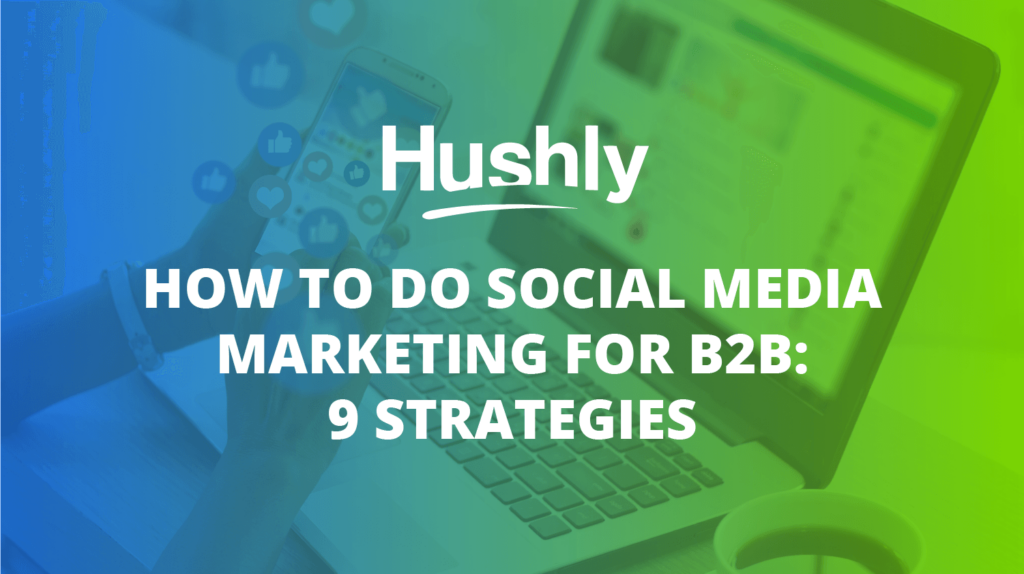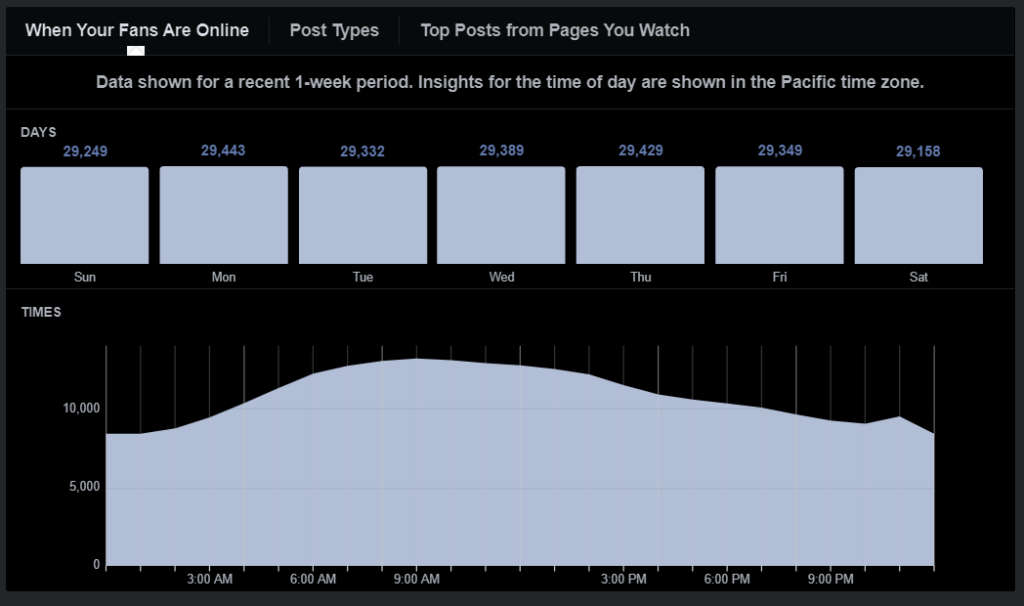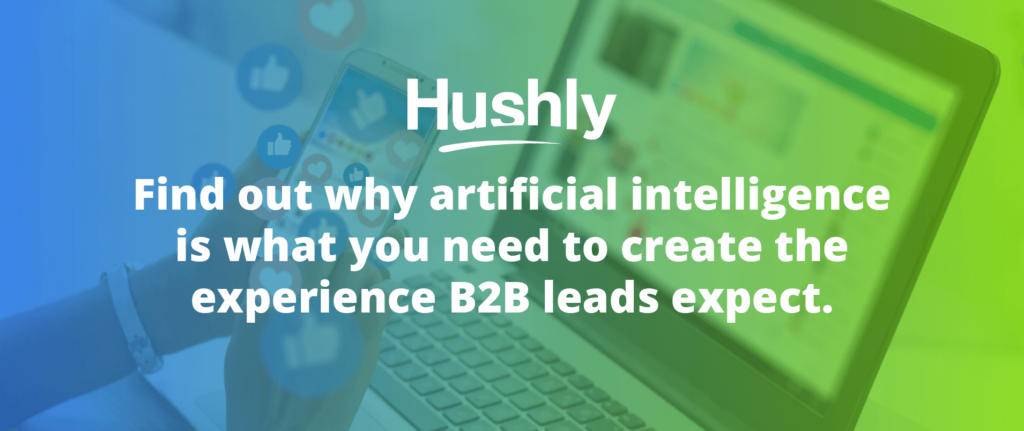When you hear the phrase “B2B social media marketing,” what comes to mind?
- Boring
- Dry
- Robotic
It doesn’t have to be that way. Many B2B brands use content to create interesting and downright exciting social media strategy.
Take Cisco, for example. Cybersecurity isn’t an inherently boring topic. In fact, Hollywood has no trouble bringing cybersecurity to life with action-packed movies: Swordfish, Hackers, Snowden, and even the entire Bourne series.
Cisco decided to do the same in a way that fits with their brand:
It’s a self-fulfilling prophecy: Tell yourself B2B social media is boring and you’ll create boring content. Here’s how to develop a social media strategy for B2B that earns attention, engagement, and interest.

How to Create a Social Media Marketing Strategy for B2B and Overcome Challenges
Like any type of marketing, social media marketing for B2B takes careful research and consideration. Use technology to study your audience and create content they’ll love.
1. Decide on Your Goals and Metrics
Without clear goals, you’ll never know if your social media strategy is “good” or not.
What do you hope to accomplish from your B2B social media marketing? You don’t have to stick to a single goal, but it is a smart idea to pick two or three main ideas and stick with them, such as:
- Account-based marketing
- Building customer loyalty
- Reaching new audience segments
- Branding and demand generation
- Lead generation and nurturing
Next, figure out which metrics you’ll use to track your progress.
Don’t focus on glamor metrics like follows and post likes – those don’t transform into any real result. Instead, track things like comments, shares, clicks, saves, and conversions.
2. Nail Down Your Target Audience
Before you write any post, you should always ask yourself who you’re writing for. What do you want to teach, tell, or show them?
You should already have buyer personas developed for content creation and other marketing strategies. Social media is a useful tool for both reaching and researching those personas.
3. Invest in High-Quality Content Marketing
You can only post so many text-only and image statuses. If you want to educate, inform, and earn trust, you’ll have to publish content to share on social media.
As you research your buyer personas, investigate what type of content they like to consume. On average, B2B buyers consume 13 pieces of content from a single vendor during the sales process.
Samples of eBooks, podcasts, and videos are great for collecting email addresses without gating your content behind forms.
Adding an AI engine to your website can help distribute your content. Similar to Spotify or Amazon, an AI engine uses algorithms to study every visitor’s behavior and make hyper-relevant content recommendations.
4. Create a Posting Schedule
Think like Goldilocks here: Not too often, not too infrequent, but just right. Facebook, for example, tends to suppress reach from people or pages who post several times in a day.
Plan your social media calendar on a weekly and monthly basis. Schedule two posts/day for a month but leave some room for breaking news and trending topics.
Check your analytics to see when your audience is most active on the app too:

5. Investigate Your Competitors
It’s important to keep an eye on your competitors’ social media activity. For starters, you can compare what type of content performs well on their page.
However, you also want to differentiate yourself. If you don’t follow your competitors closely, you might end up mirroring their content too much without even realizing it.
Look for ways to add nuance, streaks of humor, and topics that will perform well while setting you apart.
6. Find Your Social Media Voice
This is where the idea of “boring” B2B social media marketing comes from. Social media – even LinkedIn – is designed for human interaction. Not branded broadcasting.
You don’t have to dive into the casual deep end like Wendy’s, but you should at least bring your guard down a little bit. People want conversations. Use terms like “we” and “us” instead of mentioning your brand in the third person and ask lots of questions to get the juices flowing.
7. Amplify Your Message
The concept of organic reach on Facebook is almost a joke these days. However, social media as a whole is still useful for reaching new audiences.
Seek out routes to amplify your message.
Hashtags are important with LinkedIn, Twitter, and Instagram. Look for relevant ones in your industry and create your own branded hashtags as well. Shoot for niche hashtags over general ones.
You might also search for potential influencer connections or employ some active employees at your company as brand ambassadors to spread the word.
8. Include Some ABM Content
LinkedIn and Facebook also make it easy for you to dabble in low-risk account-based marketing by targeting people who work for specific companies.
Create some content for different roles at a company and use the social media ad tools to make sure they see it.
9. Retarget Your Website Visitors
Some retargeting strategies are just plain creepy. When done right, however, subtle retargeting can help you turn prospects into leads, nurture leads into customers, and build customer loyalty.
Facebook Pixel, for example, lets you track visitors by adding a little piece of code to your site. It’s especially useful for tracking performance and brand awareness when people see your posts but don’t interact with them.
Likewise, LinkedIn offers a full suite of retargeting options to nail down niche content based on what a user viewed on your website.
Level-Up Your Content Marketing with the Power of AI
You’re already sharing blogs from your website onto social media platforms. Why not create the best experience possible for your visitors?
Adding artificial intelligence to your content marketing strategy can skyrocket lead generation, lead enrichment, conversions, and overall engagement. An AI engine uses the same kind of algorithms as Amazon or Spotify to create a genuinely unique experience for every visitor – every session.
Find out why artificial intelligence is what you need to create the experience B2B leads expect.

